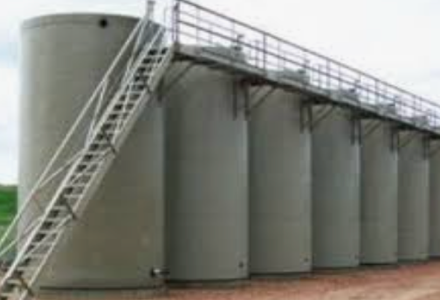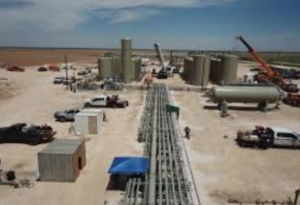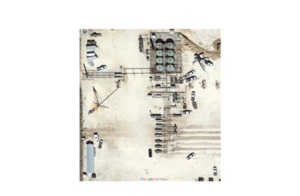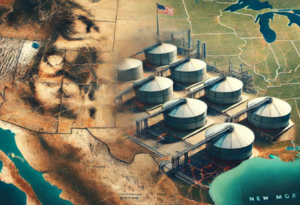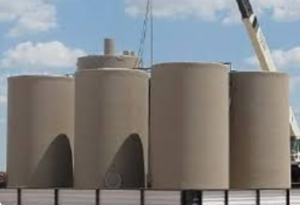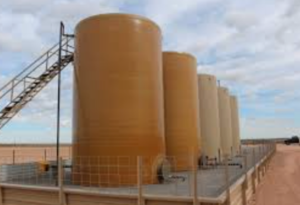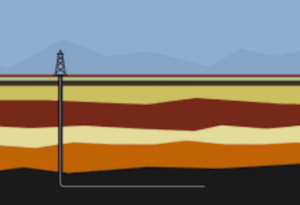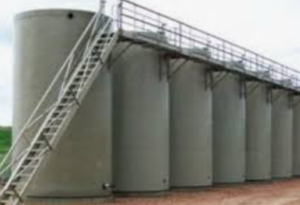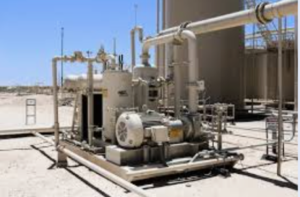EOG Resources’ co-development strategy is a key aspect of its approach to maximizing the value of its resource plays. The company focuses on developing multiple stacked reservoirs simultaneously within a single acreage position, particularly in resource-rich areas like the Permian Basin and the Eagle Ford. This type of development is driving the adoption of 1000-Bbl tanks and the requirement for High-Density Polyurethane (PU) tank bases.
High Density Polyurethane (PU) tank bases are used in various industrial applications where stability, durability, and chemical resistance are crucial. For 1000-barrel (bbl) tanks with a 40-ounce differential pressure rating, PU tank bases offer several advantages. Here’s an overview of the applications and benefits of using High-Density Polyurethane tank bases:
Applications of High Density Polyurethane Tank Bases
- Chemical Storage Tanks
- Usage: PU bases are ideal for tanks storing aggressive chemicals, as they provide excellent resistance to chemical corrosion and degradation.
- Advantages: The non-reactive nature of PU prevents chemical interactions with the tank base, ensuring long-term durability.
- Water and Wastewater Treatment
- Usage: PU bases are commonly used in water and wastewater treatment plants, where tanks are exposed to varying moisture levels and potentially corrosive substances.
- Advantages: The material’s resistance to water and chemicals makes it ideal for such environments, providing a stable foundation and preventing leaks or degradation.
- Oil and Gas Industry
- Usage: In the oil and gas sector, PU tank bases are used for storage tanks holding hydrocarbons, produced water, or other fluids.
- Advantages: PU’s durability and resistance to hydrocarbons ensure the base remains intact and functional, even under high-pressure conditions.
- Agriculture and Fertilizer Storage
- Usage: PU bases are used for tanks storing fertilizers, pesticides, and other agricultural chemicals.
- Advantages: The material’s resistance to chemicals and weathering ensures the tank base remains stable, preventing contamination and degradation.
- Food and Beverage Industry
- Usage: PU bases are employed for tanks storing food-grade liquids, such as syrups, oils, and juices.
- Advantages: PU is food-safe and resistant to a wide range of substances, making it suitable for direct contact with food products.
- Mining Operations
- Usage: In mining, PU bases are used for tanks storing process water, slurry, and chemicals.
- Advantages: The robust nature of PU ensures the tank base can withstand the harsh conditions and heavy loads typical in mining operations.
Benefits of High-Density Polyurethane Tank Bases
- Chemical Resistance: PU is highly resistant to a wide range of chemicals, making it an ideal material for tank bases in environments where chemical exposure is common.
- Durability: PU is known for its long-term durability and resistance to environmental factors such as UV radiation, temperature fluctuations, and moisture. This ensures the tank base remains functional over extended periods.
- Lightweight: Compared to concrete or steel, PU is relatively lightweight, making it easier to handle and install. This reduces labor costs and installation time.
- Flexibility and Impact Resistance: PU’s inherent flexibility and impact resistance make it suitable for applications where the tank base might experience dynamic loads or minor ground movements.
- Ease of Maintenance: PU bases require minimal maintenance due to their resistance to corrosion and wear. This results in lower long-term maintenance costs and reduced downtime.
- Environmental Safety: PU is non-toxic and environmentally friendly, making it a preferred choice in applications where environmental impact is a concern.
- Customization: PU bases can be custom-molded to fit the specific dimensions and requirements of the tank, ensuring optimal support and stability.
Example of a High Density Polyurethane Tank Base Configuration
- Site Preparation: The ground is leveled, and any unstable soil is removed to create a stable foundation.
- PU Base Installation: The custom-molded PU base is placed directly on the prepared ground or over a layer of compacted gravel for additional stability.
- Tank Placement: The 1000-barrel tank is positioned on the PU base, ensuring even weight distribution and secure placement.
- Anchoring: In some applications, the tank may be anchored to the PU base to prevent movement, especially in areas prone to seismic activity or high winds.
Visual Description
- PU Base: A thick, molded platform shaped to match the footprint of the tank. It may have reinforcement ridges or grooves for added strength.
- Surface Texture: The surface may be smooth or slightly textured to improve grip and stability.
- Color: Typically black or dark gray, as PU often comes in these colors due to its UV-resistant properties.
Conclusion
High-Density Polyurethane tank bases are versatile, durable, and resistant to a wide range of chemicals, making them suitable for numerous industrial applications. They provide a stable, long-lasting foundation for 1000-barrel tanks with a 40-ounce differential pressure rating, ensuring safe and efficient storage operations across various sectors.
Tank Blogs

